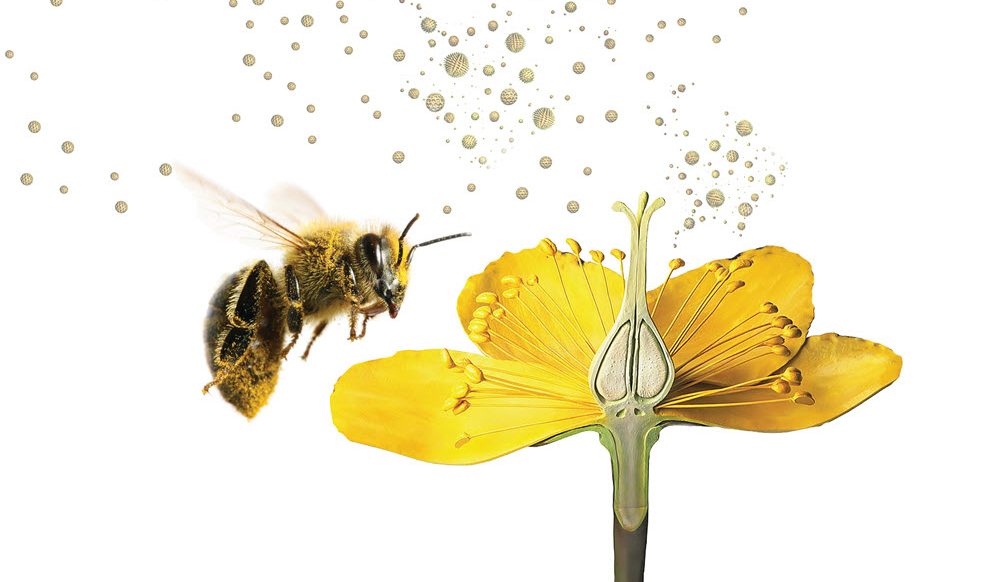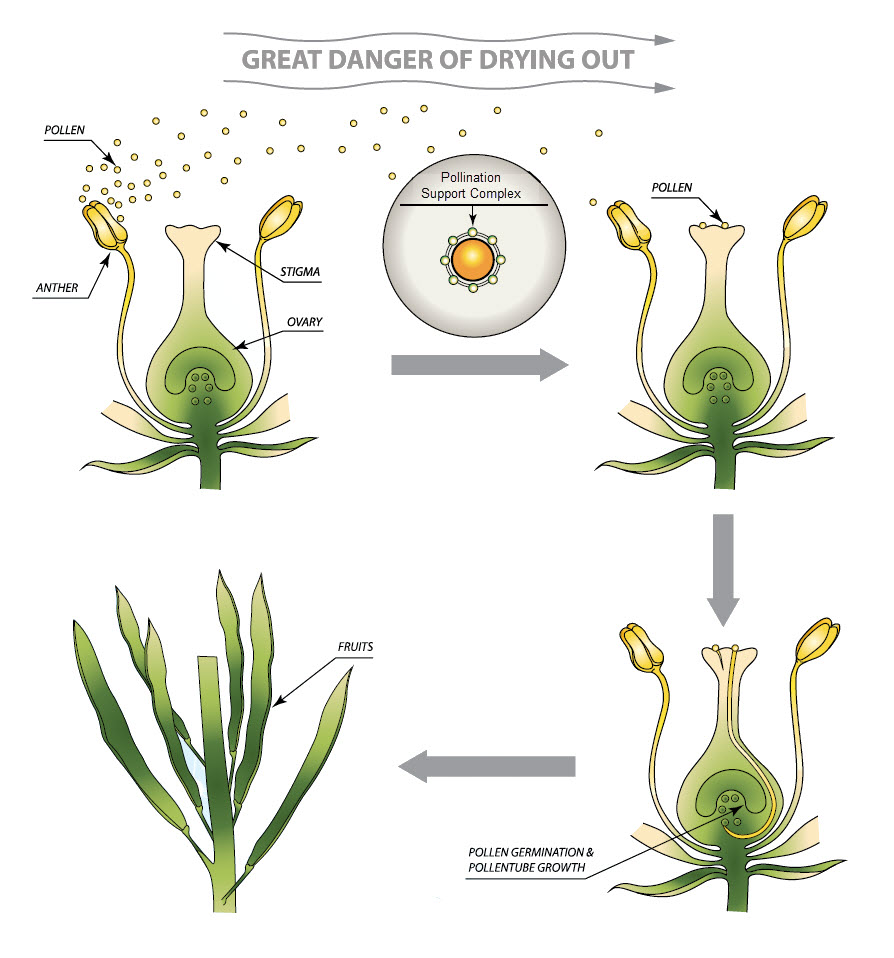
7 Ways Plant Nutrition Complexes Can Support Pollination and Fertilization
In flowering crops, there is a clearly established link between the pollination/ fertilization process, and yield potential. That is because pollination, fertilization and early fruit development have a direct impact on three of the key yield metrics:
- The number of pods/heads per plant
- The number of seeds per pod/head
- Seed weight
So, it stands to reason that the more successful you can be in aiding pollination, the more productive the crop.
As an industry, we are starting to pay more attention to finding solutions that actively promote pollination and fertilization – delicate processes that can be easily inhibited by a range of issues including poor or inappropriate nutrition, lack of pollinators, or heat stress.
Research is currently being conducted to learn more about the yield benefits of introducing pollination support via a fertility-based complex applied during flowering.
Initial trials show that foliar applications of a pollination complex during flowering impacts pollinator activity, fruit set, seed set, and final yields.
Seven ways a pollination support complex can benefit a crop:
- Protecting pollen and stigmata from drying
- Promoting delivery and capture of pollen
- Supporting rapid pollen hydration and germination
- Stimulating rapid pollen tube growth
- Promoting fertilization
- Encouraging early seed development
- Protecting against heat stress
How do pollination support complexes work?
In any given crop, a percentage of flowers abort because they were not pollinated or experienced fertilization failure – which contribute to reduced yield.
Pollination support complexes are thought to work by providing specific bioactive compounds and targeted nutrients* to support the key developmental processes of pollination, fertilization, seed set, and early fruit growth. Following are a few examples showing how these complexes work to provide specific benefits.
An abundant supply of healthy pollen is essential in attracting pollinators. Pollination complexes aid in pollen germination and viability, pollen tube growth, accumulation of secretory vesicles in pollen tubes, and fertility. This helps attracts bees, which in turn minimizes abortive flowers and increases fruit sets and yield.
Another key benefit of a pollination support complex is that it helps to hydrate pollen, and prevent it from drying out once it is released from the anthers (anthesis). This is a particular concern in situations of heat stress. The support complex can extend the life of the pollen, which increases the time available to successfully pollinate and fertilize a flower.
In addition, environmental stresses combined with inappropriate nutrition can cause flower and seed abortion at critical developmental stages. During flowering, the plant adjusts fruit load (i.e., yield) based on the number of flowers pollinated and nutritional status. For example, canola plants under stress or poor nutrition (commonly caused by a lack of nitrogen, potassium, calcium, magnesium, boron or other micro-element), can reduce the number of flowers reaching anthesis and the number of branches bearing flowers. As mentioned earlier, high heat during flowering can also cause pollination failure. Severe heat stress will also result in increased bud drop.
After successful pollination and fertilization, the ovaries develop into the fruit and the ovules develop into the seeds, two additional processes that each have specific chemical and nutritional requirements a pollination complex can provide.
Valuable support at flowering
For most field crops, the window for pollination is only 1-3 weeks. However, after a successful pollination, fertilization can occur quickly (typically within 24 hours). Therefore, promoting pollinator visits and extending the life of pollen can extend the time available to successfully pollinate and fertilize a flower.
Supporting these processes requires a combination of bioactive compounds and specific nutrients delivered at the right growth stage. While general plant nutrition is always a key issue for the proper growth and development of these reproductive structures, certain elements are required in higher concentrations between pollination and fruit development. Therefore, a combination of nutrients and bioactive compounds which enhance pollinator activities, pollen vitality, fertilization, and early fruit development can greatly enhance seed set – and help the plant achieve its yield potential.
*Key nutrients important during pollination and fertilization:
Nitrogen: Nitrogen in the form of amine is very important during reproductive period. In order to maintain high enzymatic and hormonal activity during this phase, Nitrogen is really important and in amine form. Nitrogen is used for structural protein synthesis during pollen development.
Potassium: Potassium is key to successful pollination. High levels of potassium are needed for regulating anther dehiscence, pollen hydration/imbibition, pollen tube growth leading to successful fertilization. Thereafter for sugar and starch translocation – fruit size and quality. Potassium increases nodulation in soybean and enhances the activity of nitrogenase enzyme involve in N-fixation. In addition, potassium increases antioxidants such as isoflavones in soybeans.
Boron: Boron is critical for pollen viability, seed set, carbohydrate and nucleic acid metabolism, promotes cell differentiation and maturity, sugars transport, enhances plant uptake of calcium, magnesium, potassium, promotes synthesis of cytokinins and ensures translocation of auxins, promotes root tip initiation.
Other Micronutrients: Micronutrients are key enzyme activators in pollination and fertilization related plant physiology. Research has shown plants exposed to an external supply of micronutrients significantly increased the content of all macronutrients of the main branch (raceme) and secondary branches in canola.
Proprietary Organic Acid Components: are critical for pollen germination, hydration, viability, pollen tube growth and fertility. Creates less abortive flowers. Increase fruit set and yield. Also, bees use these molecules as communication cues and act as bee attracting agents as well. (PHC’s) can act as antioxidants as well as can convert into auxins when plants need them the most-such as pollination and fertilization and during high heat conditions in summer months.


